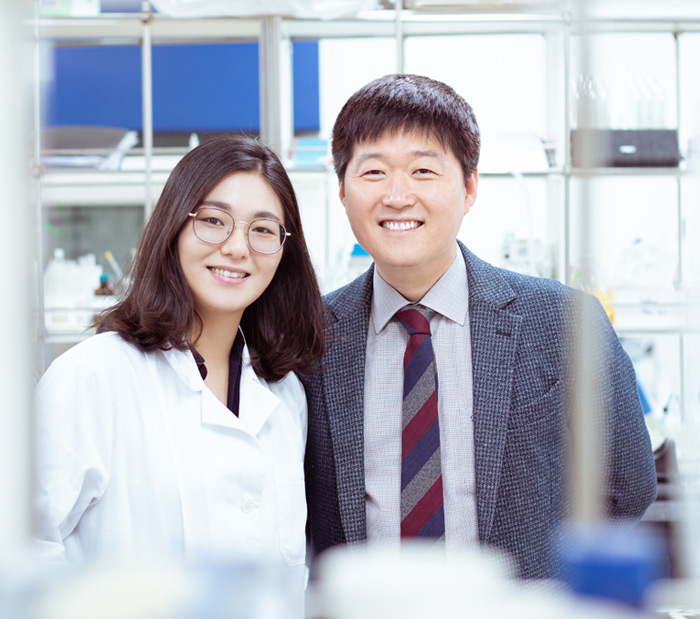Research Stories
Development of the World's First Fluorescence Amplifier Sensor for Detection of Nitroaromatic Compounds
Developed the world's first ratiometric fluorescence amplification sensor that can selectively detect nitro-explosive compounds
Pharmacy
Prof.
KIM, IN SU
A research team led by Professor In Su Kim from the School of Pharmacy, Sungkyunkwan University (President: Dong Ryeol Shin); Professor Jung Su Park from the School of Chemistry, Sookmyung Women’s University and Professor Jonathan L. Sessler from the School of Chemistry, University of Texas, Austin, U.S. developed the world's first ratiometric fluorescence amplification sensor that can selectively detect nitro-explosive compounds. The findings were selected as a cover page in the October issue of the online edition of Journal of the American Chemical Society (IF = 14.612), a world-renowned journal in the field of chemistry.
Nitroaromatic compounds are known to be explosive substances that react vigorously, releasing toxic gases in the atmosphere. Typical explosive substances as trinitrotoluene (TNT) and nitromethane are currently being used as basic raw materials for the manufacture of explosives, including gunpowder. Nitroaromatic compounds are also part of pharmaceutical manufacturing processes of several APIs such as nifedipine, sildenafil (Viagra) etc. Such class of compounds require special attention while handling as they may cause explosion as a result of heat or impact.
In this study, Professor In Su Kim's research team and collaborators developed the world's first fluorescence amplifier sensor that can selectively adopt various nitroaromatic compounds by fluorescence indicator displacement assay method depending on binding affinities. In particular, a method was proposed to detect identifiable rate-measurable wavelength changes depending on the type of nitro-compound. Previously reported nitroaromatic sensors rely on fluorescence quenching technique with a simple reduction in luminescence intensity. Lower sensitivity, lack of selectivity and false positives are perceived as major drawbacks related to the previously known sensors as compared to the fluorescence amplification sensors.
Professor In Su Kim said, "This study resulted in the development of a new technology that can selectively detect explosive nitro-compounds, especially fluorescence amplification can be visually identified and this technology can be used to develop small explosive detection sensors, that are easy to carry, in the future."
This research was conducted with financial support from the National Research Foundation of Korea and the Ministry of Science and ICT (MSIT).
Picture Description |
< Picture Description >
First Figure: When NACs (nitroaromatic explosive compounds) are added to a supramolecular structure comprising a large organic molecule (Bz-TTF-C4P) and a fluorescent rylene dye molecule (PDI, perylenediimide); the giant complex selectively recognize NACs, forming supramolecular assembly and subsequently emitting fluorescence.
Second Figure: A schematic representation that suggests, fluorescence can be detected using well-known RH-6G (rhodamine-6G) as the fluorescent chemical compound through similar reaction.
< Illustration of cover page for the October issue of JACS >
< Term Description >
Ratiometric: A method for measuring intensities of emission spectra by utilizing two or more wavelengths to detect changes to local environment. This is usually measured by using special sensors that are sensitive to certain environmental parameters such as; pH, polarity, viscosity, or ion concentration.
Fluorescence amplification: It is a technique to measure the amplification of the fluorescence signals released by the fluorescent group by utilizing the fluorescence colorimetric unit.
Trinitrotoluene (TNT, 2,4,6-trinitrotoluene): Organic aromatic compound containing three nitro groups, which is used as reference material to compare the strength of bombs and explosives.


